Remote Working Tools and Tips
Stay connected at all times with remote IT. Access to quick and easy remote IT Support means Belfast and Northern Irish businesses can get their IT issues fixed quickly. You don’t need to leave your customers behind when you leave the office. There are many useful tools and systems out there to allow you to keep working, even when you’re not in the office.
Mastering remote work is all about finding the right tools to stay productive and connected. This guide will have you and your team synchronized and working in harmony, wherever you happen to be.
The Covid-19/coronavirus outbreak is rapidly changing the way we work. More and more businesses are encouraging staff to work from home to keep staff, families, customers, and communities safe during a challenging time.
As it looks likely that a huge part of the workforce in Belfast and across the UK will now be working from home for some time, businesses need to take urgent steps to ensure their staff can work efficiently, securely and confidently from home.
Being able to work as normally as possible, albeit from home, will not only help protect your business but will also provide stability and reassurance for your employees. This is particularly important at a time when they may need additional emotional support, as well as practical help.
Powerful strategies
Even before COVID-19 coronavirus disrupted the planet, remote work had gone from that rare unicorn of workforce arrangements to a standard component of many people's workweek. According to a recent Gallup poll, 43% of employed people from UK log at least some out-of-office, on-the-clock time. A full 31% of those who work remotely at least some of the time spend four or five days a week out of the office.

What are the essential tools remote workers can use to connect and collaborate?
REMOTE DESKTOP
Want to jam on a slide deck from home but all your visual assets are on your office computer? You'll need a good remote desktop app. Same goes for workers who are a hundred percent remote but have a home desktop they want to access while traveling.
TEAMVIEWER
The free fan favorite. TeamViewer available for Windows, OS X, iOS, Linux, and Android, and it's free for personal use. File transfer, clipboard transfer, wake-on-LAN, and easy setup make it a great option for remote workers who need basic desktop access. No port forwarding is necessary, and very little firewall futzing is required to get it going. It also supports two-step authentication.
Microsoft Remote Desktop (RDC) / Apple Remote Desktop (ARD)
Robust, native options if you use one of the two predominant operating systems. ARD offers complete remote management of systems, including software updates, while RDC offers slightly more limited remote access. Then again, RDC is free and ARD costs £80.
REAL-TIME COMMUNICATION APPS
Slack
Whether you're down the hall or halfway around the world, Slack is the clear frontrunner in real-time team chat. The basic premise is that Slack spares email inboxes and reduces the number of clunky ccs and bccs you need to manage. Teams can be created around departments, projects, employee fan clubs … really anything you want. Messages are sent out to teams over the transom, or you can DM individuals or smaller groups. Slack integrates with both Google Docs and DropBox. It has a robust API, enabling IT pros to tailor Slack apps for specific team needs.
Microsoft Teams
Teams, which is part of Microsoft Office 365 subscriptions, is a full service collaboration and communication suite for Windows users. You can make video and VOIP calls within Teams, direct and group message other users, and share work from other 365 apps, such as PowerPoint and Excel.
VIDEO CHAT
Zoom
If you have big team meetings that include lots of remote workers, Zoom is a video chat application that supports Brady Bunch mode of dozens of participants (Google Hangouts, a good free alternative, recently upped the Hangout participation limit to 25). Large meetings with up to 500 participants are supported as an add-on feature. The pro version of Zoom is £119.90 /year/license, which you'll need because the free version caps meetings at 40 minutes. (Google Hangouts, again, is free.)
Skype for Business / Microsoft Teams
Microsoft is aiming to take some of Slack's market share with its Slack clone Teams. Part of that play includes an enterprise version of Microsoft-owned Skype. Currently, both Teams and Skype are available as part of the Microsoft Office 365 Basic/Standard bundle.
The real beauty of Microsoft Teams is that it brings together many daily activities and processes in one place. All documents connected to a project can be securely stored, making everything accessible to team members who need them. The synching capabilities within Teams means colleagues can work on the same document, at the same time – with no worries about overwriting work.
Staff can simply log into this one platform to access and edit documents, message colleagues, host audio or video calls and meetings, and much more. If your employees are already familiar with Word, Excel and other Office 365 products, these can all be used within Teams. The platform also offers third-party integration with popular apps, so your staff can readily access everything they need.
PROJECT MANAGEMENT
Monday
Monday has been advertising aggressively in hopes of positioning itself as a viable Basecamp alternative. Kanban-based and visually stunning, the cloud-based project management platforms is aimed at small and mid-sized teams and uses labels to clearly identify who is working on what when.
Trello
Trello is about as simple as it gets when it comes to project management, but that simplicity belies incredible organizational and task management power. Trello is built around the notion of bulletin boards. Each board can represent a project, for example. Within each board, teams create lists, which they then populate with cards. The cards can be assigned to specific team members, labeled, stamped with a deadline, and crammed with comments or attachments. The hierarchical nature of the system makes it flexible while still preserving a baseline simplicity.
TIME MANAGEMENT
Timely
If you use a calendar to carve out chunks of time to work on dedicated projects, Timely is a great time tracking app to check out. Unlike some time tracking systems, which only track time while you work, Timely allows you to schedule tasks and track the time spent on projects in real time. It works with a calendar interface. For hourly employees, it also tracks earnings
What are some tips for managing a remote workforce?
FOCUS ON GOALS One of the main reasons employees may desire a remote work situation is to escape the office pressure of always seeming busy. Remote work, by its nature, lends itself to goal-oriented, not activity-oriented management. As a manager, focus less on how much time employees are spending on tasks and more on their deliverables.
COMMUNICATION NEEDS TO BE OPEN AND EXPECTATIONS NEED TO BE CLEAR With distance, it's harder to synchronize expectations. It's also easier to let dissatisfactions fester — and that's true for both managers and employees. Therefore, it's important teams are communicating often. It's also clear everyone knows what's expected of them and by what standards their work is being judged. Setting deadlines and scheduling standing check-ins is a great way to keep everyone on the same page and working toward the same goals.
FIGURE OUT HOW TO FOSTER COMMUNITY It's difficult, but not impossible, to instill a company culture in a virtual environment. Team members should be encouraged to interact online in ways that engender community and camaraderie. Little observances, like birthdays or sales goals met, can be opportunities for celebratory digital interactions. The right communication and collaboration tools will also lend themselves to spontaneous interaction.
Finally, scheduling regular on-site get-togethers is another way to instill company culture. The takeaways from a retreat or office visit can serve as the foundation for a strong team culture even when workers are physically separated.












